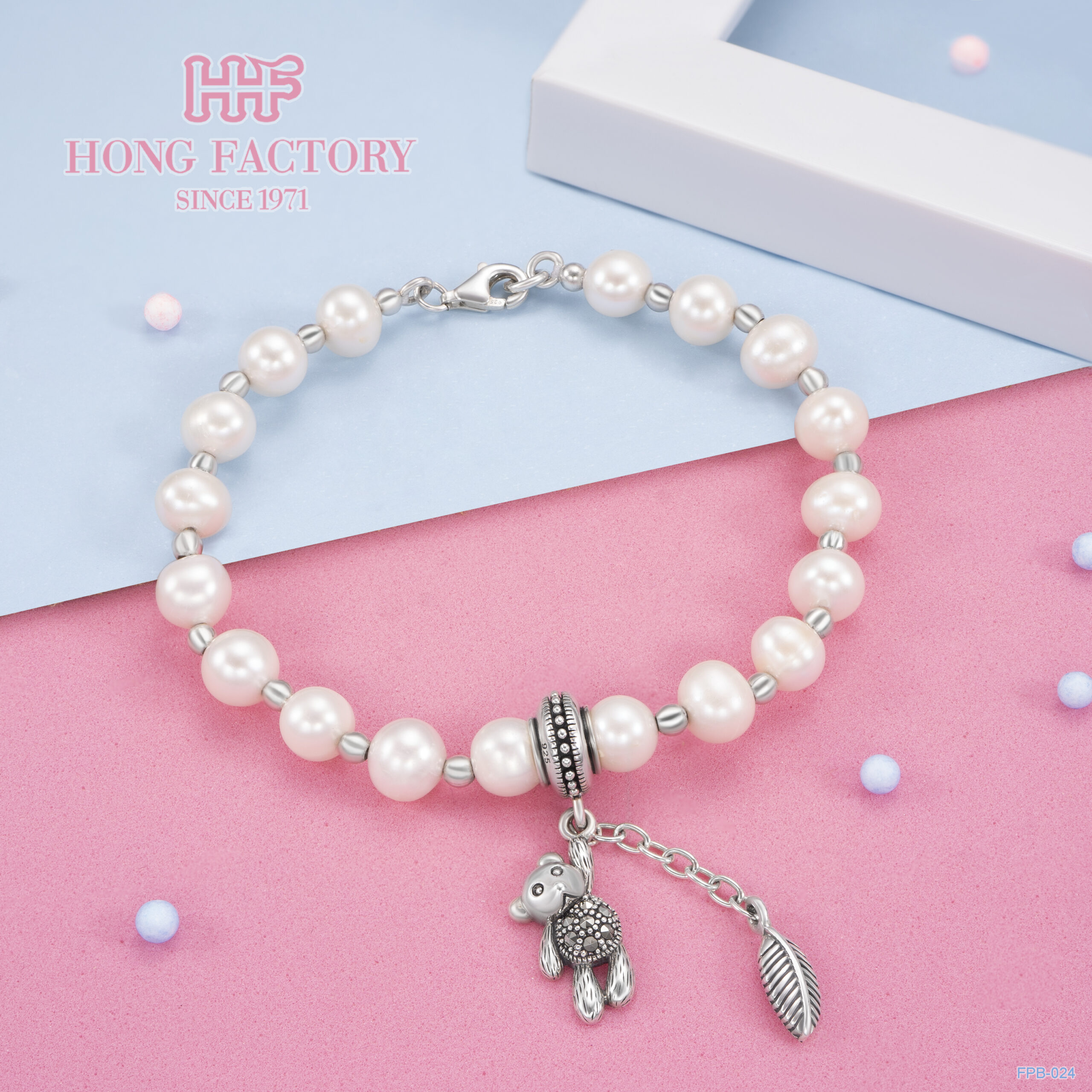A Freshwater Pearl Necklace is one of the most timeless and elegant pieces of jewelry a woman can own. Its soft, radiant glow and natural charm make it suitable for every occasion—from daily wear to special celebrations. However, pearls are delicate organic gems that require special care to maintain their beauty and luster over time. Unlike diamonds or gemstones, pearls are composed of layers of nacre that can be sensitive to chemicals, heat, and dryness. This article provides practical tips on how to care for and store your freshwater pearl necklace to ensure it remains as stunning as the day you first wore it. Marcasite jewelry
Understanding the Nature of Freshwater Pearls

Freshwater pearls are unique because they are created by living organisms. Unlike gemstones formed deep within the earth, pearls are made inside mussels through a natural biological process. This organic origin gives them their distinctive iridescent glow—but it also means they are more fragile. Exposure to harsh environments or improper storage can cause them to lose their shine, develop scratches, or even crack overtime. Understanding their delicate composition is the first step to preserving their natural elegance.
Freshwater Pearl Necklace – Essential Care Tips
The Freshwater Pearl Necklace requires gentle, consistent care. With proper attention, your pearls can last a lifetime and even be passed down through generations.
- Wear Your Pearls Often
Believe it or not, pearls benefit from being worn. The natural oils from your skin help keep them hydrated and prevent drying or cracking. Regular wear also maintains their soft sheen. However, remember that pearls should be the last thing you put on and the first thing you take off when dressing to avoid exposure to cosmetics and sprays.
- Avoid Contact with Chemicals
Pearls are highly sensitive to chemicals commonly found in perfumes, hairsprays, lotions, and cleaning agents. These substances can dull the surface and erode the nacre layer. To protect your necklace:
- Apply perfumes and cosmetics before putting on your pearls.
- Wipe your necklace after each use with soft, lint-free cloth to remove any residue.
- Never clean pearls using ultrasonic or steam cleaners.
- Keep Pearls Away from Extreme Heat and Humidity
Exposure to high heat or extremely dry conditions can cause pearls to become brittle. Avoid leaving your freshwater pearl necklace near radiators, windows, or in direct sunlight. Likewise, excessive humidity can weaken the silk thread used for stringing pearls. Ideally, store them in a cool, dry environment.
- Handle with Care
Pearls may appear smooth and durable, but their nacre surface can be scratched easily. Always handle your necklace gently:
- Avoid dropping or tossing your pearls onto hard surfaces.
- Don’t store them with sharp jewelry pieces such as rings or metal chains.
- When removing your necklace, clasp and unclasp it gently to prevent wear around the clasp area.
- Clean Gently and Regularly
Keeping your Freshwater Pearl Necklace clean is simple yet essential. Follow these steps:
- After each wear, gently wipe the pearls with a slightly damp cloth to remove oils or dirt.
- For deeper cleaning, use lukewarm water with mild soap (not detergent). Dip a soft cloth in the solution and carefully wipe each pearl.
- Lay the necklace flat on a towel to dry air. Never hang it to dry, as the wet string may stretch.
- Restringing for Longevity
Over time, the silk or nylon thread holding the pearls together can stretch, weaken, or discolor. For necklaces worn frequently, it’s best to have them restrung every 1–2 years. A professional jeweler can knot the pearls individually, preventing them from rubbing against each other and minimizing damage if the strand breaks.
Proper Storage for Your Freshwater Pearl Necklace

Even when not in use, how you store your pearls matters just as much as how you wear them.
- Use a Soft Jewelry Pouch or Box
Store your freshwater pearl necklace in a soft, lined jewelry pouch or a box with velvet or silk lining. This prevents scratches and keeps moisture levels balanced. Avoid storing pearls in plastic bags, as plastic can emit chemicals that damage the nacre.
- Store Separately
Pearls should be stored separately from other jewelry. Hard gemstones and metals can scratch their delicate surface. If space is limited, wrap your necklace in a soft cloth or anti-tarnish tissue before placing it in your jewelry box.
- Avoid Airtight Containers
Pearls need a small amount of moisture to maintain their natural luster. Storing them in airtight containers can dry them out, causing them to lose their glow. Allow them to “breathe” by keeping them in a slightly ventilated jewelry box.
- Keep Away from Strong Light
Long exposure to direct sunlight can fade colored pearls or alter their natural tone. Always store them in a shaded, cool area.
Traveling with Your Freshwater Pearl Necklace
When traveling, pearls need extra care. Use a dedicated travel jewelry case with padded compartments to prevent tangling or impact damage. Wrap your necklace in a soft pouch or cloth and avoid packing it with heavier items that may crush it. After traveling, inspect the strand to ensure the clasp and knots are still secure.
The Importance of Professional Maintenance
Every few years, have your Freshwater Pearl Necklace professionally inspected. A jeweler can check for thread wear, clasp integrity, and pearl condition. Routine maintenance ensures your necklace remains secure and radiant, especially if it holds sentimental or heirloom value.
A Freshwater Pearl Necklace is not just an accessory, it’s an heirloom of elegance, femininity, and natural beauty. By following simple care and storage practices, you can preserve its brilliance for decades. Treat your pearls with gentleness, wear them with pride, and store them with care. With proper attention, your freshwater pearls will continue to shine as symbols of grace and timeless sophistication, ready to be treasured for generations to come.
